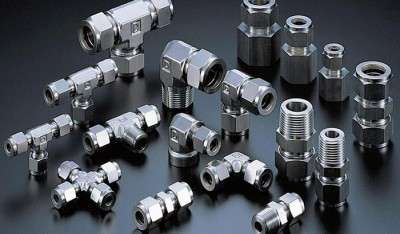It's critical to understand the fittings you're utilizing while developing or maintaining a pneumatic or hydraulic system. Although threaded and compression fittings appear to be almost identical, they attach in quite different ways while performing the same functions.
threads differently.
Differences - Threaded fittings have a single-piece connection end that connects to the port or block. These threads are constructed in a tapered, cone shape to create a seal for the connection with the help of Teflon tape or pipe dope. Compression fittings, on the other hand, have a three-piece connection that is responsible for connecting tubes. Instead of sealing on the threads, compression ends often have a parallel shape, and the seal point is established with the help of a ferrule (ring, olive, or sleeve) and a compression nut. The threads were only needed to hold the fitting together with the compression nut in this situation.
How a compression fitting works
Compression fittings, as you can see, use force to create a seal. This is accomplished via the three-piece system, which includes a compression nut, connector, and inner ring (the ferrule). The ferrule is forced against the tube with enough force when the compression nut is properly tightened, eliminating excess space in the joint and preventing fluid or gas leakage. The ferrule, not the nut, threads, or any other mechanical connection, creates the seal. This relieves the mechanical connection of all stress.
Identifying a Compression Fitting
Take a look inside a fitting if you're not sure whether it's threaded or compression. The tube will be seated inside the compression fitting. This is the quickest technique to determine whether or not a compression fitting is present. Look for a nut and the aforementioned ferrule if you need more proof (ring). The threads alone won't tell you everything you need to know because it's tough to identify if they're tapered or parallel.
for more details visit- Hastelloy c276 Tube Fittings






Comments